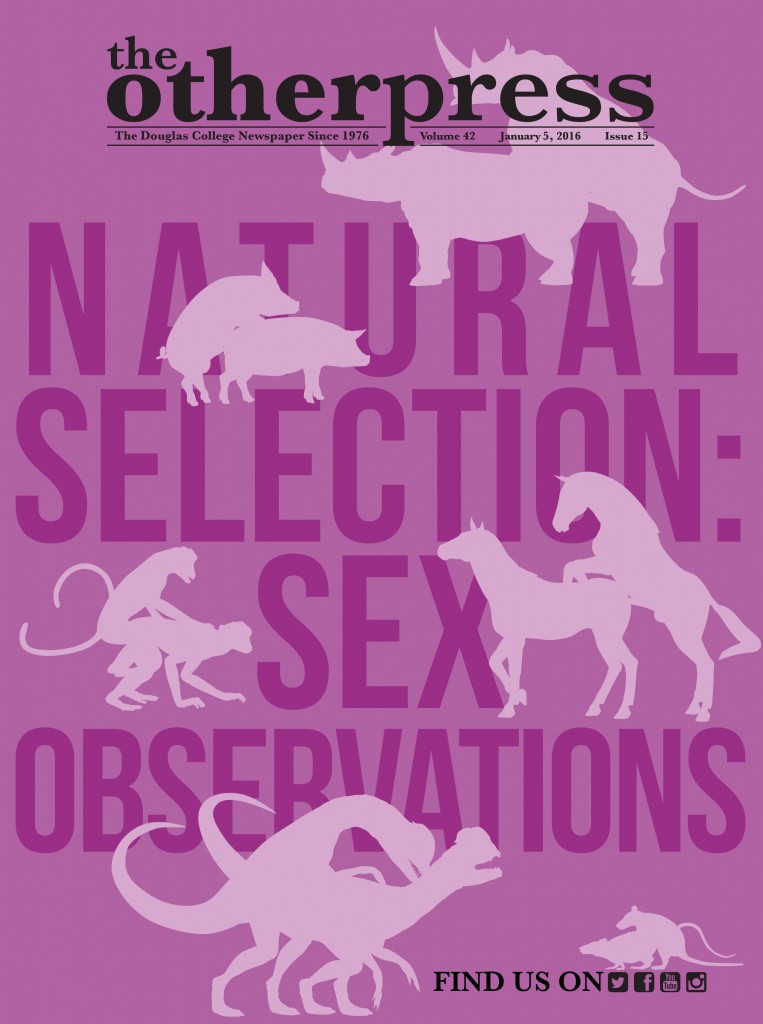
What we need to know to prevent chaos with COVID-19
By Jessica Berget, Editor-in-Chief, and Janis McMath, Assistant Editor
With so many stores and bars closing, photos of supermarkets emptied out, schools forced to change to online classes, and people advised to practice social distance—the threat of COVID-19 looms over us. Most of us are safe from the virus, yet with the media coverage and the prepping of doomsday by the public, we are reminded of the term “mass hysteria.” A lot of people are terrified of this new ailment affecting them or their family members and so they are preparing for the absolute worst, but this is not the first time something like this has sent society into a panic. Here are a few cases of mass hysteria from the past that we should use to inform us about what to avoid today.
Blackburn Fainting Epidemic: Mass hysteria’s physical impacts
At a school in a small town, 300 children fainted over the course of three days. The first group of 140 children fainted because they were in the hot sun wearing heavy clothes—but the rest of the children were not under such pressure. They were just in class, normally going about their day, albeit with a little anxiety about the fainting spells their schoolmates had recently experienced. This is any teacher’s nightmare, and a true story that happened in 1965 Blackburn, England.
As soon as paramedics would go in to retrieve a group of unwell children, another class would immediately suffer the same fate. Experts were flown in and the school was tested, but nothing significant came of those tests. There wasn’t anything in the walls; there weren’t any fumes. The first 140 children who fainted were burning in the sun—passing out seemed to be the inevitable end. But why had the rest of the children fainted? It is commonly considered by experts that contextual history and the science of mass hysteria explain this phenomenon.
At the time, Blackburn was suffering polio outbreaks that had impoverished the area and brought tragedy in several different ways. Many people outside of Blackburn had negative perceptions of the residents and would refuse to offer the struggling population services or to enter their town. This general stress that was placed on the citizens of Blackburn is proposed to have left them vulnerable. The children saw a group of their schoolmates seriously affected by illness, and being already full of fear themselves, were susceptible to experiencing the symptoms of mass psychogenic illness (MSI)—which includes “nausea, vomiting, headaches, weakness, dizziness, chest pain, abdominal pain, hyperventilation, and twitches” as reported in The Guardian.
In light of the coronavirus panic, it is important to remember the priority mental health should always be. MSI was able to make all these students faint and convulse simply because were stressed and were swayed by the power of suggestion. Emotional well-being is intimately tied to physical well-being, so don’t let COVID-19 make you sick without even infecting you.
The Toxic Woman: Mass hysteria’s extreme physical impacts
On the night of February 29, 1994, Gloria Ramirez, a 31-year-old woman from Riverside California entered a hospital complaining of a rapid heartbeat and low blood pressure. She had already been battling cervical cancer, which explains her deteriorating health. What it doesn’t explain is the chaos that happened next.
Doctors and nurses went to work on her immediately, proceeding to fill her with all the necessary drugs for her condition. She got worse and the nurses decided to move to defibrillation. As they removed her shirt, they noticed that an oily sheen that covered her whole body, and that she had a sweet, garlicky smell emitting out of her. Weirder yet, when they took samples of her blood, they noticed it had a putrid, ammonia-like smell to it and little particles were floating in her blood.
Soon after, one of the nurses fainted and was taken away to rest. Another nurse fell faint as well and developed apnea—a kind of breathing problem. A third nurse then fainted, and then was unable to move her limbs. After that, a number of hospital staff began to experience feeling faint, ill, nauseous, temporarily paralyzed, or had difficulty breathing. Ramirez did not live through the night, and her death caused even more panic within the hospital.
After a lengthy investigation, officials ruled that the hospital staff experienced extreme stress and mass sociogenic illness triggered by the odour coming from Ramirez.
In other words, it was mass hysteria that caused the staff’s strange reactions. There have been some theories that Ramirez used DMSO, a cream to treat her cancer pain that was banned by FDA in 1965 because of the chemicals found in it. Mixed with oxygen and the other drugs she was put on, many hypothesized that this combination created a chemical vapour that affected the staff working closest to Ramirez. However, her family denied that she used this cream, and many scientists refute that the vapour could not have been that concentrated, or that the staff would have noticed their eyes burning when first in contact with it.
Furthermore, the ambulance staff that brought her in did not suffer any strange afflictions, and the fact that it was mostly female staff who were affected all points to the well researched idea that this was a result of mass hysteria—as it has been shown that women are more susceptible to it. (Though this conclusion is common, it is controversial.)
Knowing that mass hysteria could even potentially cause such extreme physical reactions like this is harrowing. If the current COVID-19 panic continues, the sickness of stress could potentially create more debilitating symptoms for the population.
Satanic Panic: Mass hysteria’s emotional impacts
In the ‘80s people were facing another pandemic—Satanism.
It all started in the 1972 when a book called The Satan Seller was published detailing the author’s history as a former Satanist priest. Though it was proved to be fiction later in the ‘90s, the fear of Satan was alive in many people at the time of its release. This fear was only accelerated by the 1980 book Michelle Remembers when Canadian psychiatrist Lawrence Pazder and his patient (and later, his wife) published a book about his patients supposed “recovered memories” about being involved with rituals and abuse when she was just five years old at the hands of a Satanic cult based in Victoria, BC. He also coined the term “satanic ritual abuse” (SRA), which served as the basis for many allegations hence forth.
The looming presence of Satanism terrified the entire nation. In 1983, one case captured the attention of everyone in North America. The McMartin preschool case was the longest, biggest, and most expensive trial in California history—going for about three years. It was alleged by the media that the workers there had raped, tortured, and abused children at their school. The media continued fanning the flames of Satanism and the occult with forums and PSA’s about the dangers of Satanism. This caused a spike in allegations of abuse—often unsubstantiated and with no proof or evidence—on daycare centres, family members, neighbours, or anyone who seemed suspicious, effectively turning it into a witch-hunt. This widespread fear over the next two years resulted in 26 people being falsely incarcerated for these Satanist rituals, yet the only evidence for these trials was circumstance—there was no physical evidence.
It was found that these allegations came from a mix of mental illness, false memories, people being influenced by the barrage of media about Satanic abuse, and leading interview questions—during which kids were coerced into saying they were abused.
As time went on many people realized the things that were alleged were virtually impossible and many of those falsely imprisoned have been set free. But the imprint of false confessions and memories of horrible abuse still took a major emotional toll on many families involved in these trials and the people who were swept up in this hysteria.
Remembering to take a step back, breathe, and consider how our heightened emotions are controlling us is vital in times of crisis. If we panic, we can create more ruin than what would have naturally occurred. Keeping cool will ensure the least possible damage to occur.
Looking at these previous cases, it’s evident that mass hysteria can cause extreme physical, mental, and emotional stress out of what seems like thin air. With this in mind, let’s consider our reactions to coronavirus and how it affects us and humanity. Yes, it’s good to take precautions, but do we really need to panic and buy out toilet paper and hand sanitizer? Coronavirus is not the first-time people have been swept up into the fearmongering and hysteria, and it sure won’t be the last. Human nature can be inferred from history to prevent panic in the present.


